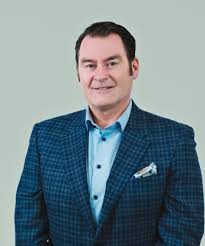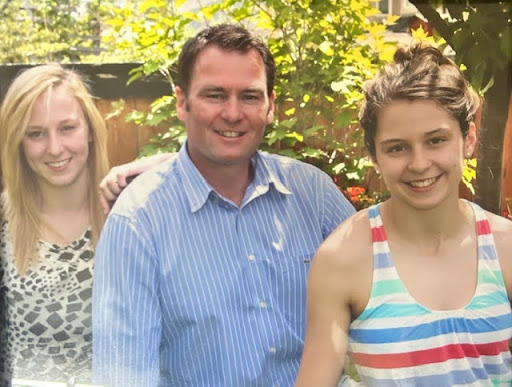
Boost Rebookings and Grow Your Practice📈
Clinic growth expert Sanjeev Bhatia shares the proven phone scripts and processes he uses to reduce drop-offs and help clinics thrive. Only available to Juvonno Campus subscribers.
Get the Guide Now
Running a clinic is a delicate balancing act—exceptional patient care on one side, profitability and streamlined operations on the other. Yet, revenue leaks, unclear budgeting, and missed patient retention opportunities can quietly erode even thriving practices. With increasing industry demands in Physical Therapy, Allied Health, and other specialties, clinic owners often feel overwhelmed.
To cut through the noise, we interviewed Gary Thorne, Founder of ELEVATE Practice Intelligence. With 15+ years managing a $125M portfolio across 60+ clinics, and hands-on experience as a successful clinic owner, Gary shares how to transform challenges into growth opportunities.
This interview is packed with actionable advice on clinic profitability, smarter budgeting, and retaining patients more effectively. If you’re ready to optimize your clinic’s operations without compromising care, let’s meet the expert who’s helping clinics thrive: Gary Thorne.
[[shortcta]]
The Interview
Getting to Know Gary
Gary, if I were meeting you for the first time at a conference, what would you tell me about yourself and your work that makes ELEVATE stand out as a game-changer for clinic owners?
Hand me a Brené Brown TED Talk and a Simon Sinek keynote, and I’m like a kid in a candy store except the candy is emotional intelligence and visionary leadership.
Over my 15 years as a national healthcare executive, I’ve learned one simple truth: private practice owners have been on an uneven playing field for decades. I’ve sat across from hundreds of owners dealing with messy books, no annual plans, and no roadmap for sustainable growth—leaving them with little value to a buyer.
That’s exactly who we built ELEVATE for. ELEVATE is Canada’s only Bookkeeping and Payroll firm designed by healthcare operators for practice owners. We’ve bolted a downstream financial engine to upstream operational and practitioner models, creating a system that drives practice profitability.
What are the three accomplishments—whether personal, professional, or otherwise—that you’re most proud of and feel best showcase your journey to founding ELEVATE?
Girl Dad first, always. Hands down, the best job I’ll ever have. The pure joy of being a dad to two amazing, strong, talented, and independent daughters is unmatched. It’s unconditional love at its best.

Team first, always. Leadership isn’t about being in charge—it’s about taking care of those in your charge. For 15 consecutive years, my team and I delivered profit numbers 4x higher than the average practice. Sustaining excellence with predictable outcomes is pure gold for any clinic owner.
Racing Ironman Triathlons. Wow, where to begin. The biggest lesson? The absolute belief I have in myself to succeed.
" Things went wrong in all four races, but adapting, staying resilient, and celebrating the courage to even start the journey are lessons that carry into everything I do."

If you could teach a masterclass on any topic, what would it be, and why?
Sustained excellence in clinic management and the infinite game.
Too many clinic owners are trapped in short-term, survival-based thinking. True success isn’t about winning a single quarter; it’s about creating lasting impact, purpose, and profit over the lifetime of a practice.
The principles of the infinite game teach owners how to outlast trends, competition, and economic downturns. Sustained excellence is intentional—built on accountability, execution, and resilience—and the best part? There are no fixed rules.
Coaching practice owners to shift from chasing shiny objects to creating enduring impact in the communities they serve would be one of the most rewarding things I could ever teach.
What’s the best piece of advice you’ve ever received, and how has it shaped your approach to work or life?
At a young age, my dad taught me to find an activity that I love and get great at it. There is no glory without hard work and good enough never is. Lessons learned on the soccer field translated through 5 national appearances, two degrees and 4 career progressions to VP-Operations. Blessed to have had an amazing dad.
Profitability Basics
What would be considered a ‘good’ profitability %, and how do you calculate it?
Let’s face it, if your clinic’s profitability isn’t outperforming the market (think the S&P’s average of about 8%), you might want to ask yourself why are you putting in all this effort?
The simplest way to measure profitability is by looking at Operating Income, found on your monthly profit and loss (P&L) statement. Think of it as your clinic’s financial heartbeat.
Here’s the formula:
Operating Income = Revenue - Contractor Expenses - Wages & Salaries - Operating Expenses and Costs.
[[shortcta]]
There are other ways to measure profitability, like Net Income and EBITDA (Earnings Before Interest, Taxes, Depreciation, and Amortization). But Operating Income gives you the clearest, most actionable benchmark because it only looks at profit from day-to-day business operations, before financing or tax decisions come into play. It shows how well the clinic runs its actual business.
How your operating profit margin stacks up:
✅ Great: 22% and above
💪 Strong: 17% – 21%
👍 Good: 13% – 16%
🤔 Fair: 8% – 12%
🚩 Poor: 7% or below
What are the key financial benchmarks I should be tracking as a clinic owner?
A timely, monthly P&L report is essential to track financial health. Most key benchmarks are based on expenses as a percentage of total revenue. The higher the expense, the more attention it needs.
Here are the key benchmarks to watch and to target:
Direct Labor (Practitioners) 50% – 52%
Indirect Labor (Admin) <8%
Gross Margin 40% – 42% (Direct + Indirect Labor - Revenue)
Rent <10% (even if you own—pay fair market rent)
General & Administrative (G&A) <8%
Operating Income 22% – 24% (a “great” result)
Turning Data into Action

I get my P&L (Profit & Loss) reports every month but feel stuck. How can I turn these numbers into actionable insights?
I get the feeling of being stuck. Practice owners are typically ‘healers’ first and ‘business’ comes second. Here are a few insights that might help you at a high level.
Your P&L is your clinic’s monthly report card. It’s a lag measure—meaning it shows the results of everything that’s already happened. Your systems. Your processes. Your team.
If you want to change those results, you’ve got to start focusing on your lead measures. That means identifying 2–3 specific actions or goals that will move the needle going forward.
What’s one habit every clinic owner should adopt when reviewing their P&L statements?
Get curious. That’s the mindset. Ask yourself:
“How do I lower the cost of every transaction in my practice?”
From there, you can start to unpack bigger questions:
- Where can I reduce fixed costs like rent or labor?
- Can I raise prices in a way that protects my profit margin?
- Can I upgrade my team so I get better output for the same or less cost?
These aren’t easy questions. But they lead to better decisions.
Why is a 12-month budgeting and forecasting plan essential for clinic growth?
You’ve heard the clichés—fail to plan, plan to fail… if you don’t measure it, you can’t change it.
The first reason why practice owners don’t create an annual financial growth plan is that it is difficult to conceptualize, calculate and create a twelve month plan.
The second and most important, it takes an inordinate amount of accountability, execution and discipline to consistently operate a practice month on month, quarter on quarter and year on year.
But that plan is your roadmap. Your financial GPS. It gives you structure. It forces you to measure what matters. And it helps you tie your operational and practitioner performance directly to your financial goals.
[[longcta]]
Advanced Clinic Profitability Topics
Is there such a thing as bad revenue?
Absolutely. Not all revenue is good revenue.
Every service stream carries a different dollar value per treatment—and some just don’t make long-term financial sense. For example, $85 per visit from extended health? That’s strong. But $45 from a government-funded stream might not even cover your costs unless you adjust the model—say, group sessions or assigning lower-cost clinicians.
If you don’t, that service quietly drains your resources.
Bad revenue looks busy, bleeds margin, and slowly erodes your sustainability. Worse? It leads to burnout. We always advise owners: stop equating volume with value. Revenue only serves your mission if it pays your people, covers your overhead, and leaves enough to reinvest in excellence. Otherwise, it’s just an expensive distraction.
How can I reduce my clinic's fixed costs like payroll?
Here-in lies one of the most important problems practice owners must solve to create long term, sustainable profit growth. Time and time again we see too many practice owners overpaying admin or practitioners just to keep the lights on. Out of control compensation is a band-aid for deeper problems like poor culture, unclear impact and purpose, or lack of leadership. Profitability suffers and burnout follows.
Our first step is to have owners rank their practitioners by value delivered to the clinic. Just like we do with revenue streams. Often, there’s a 6–10% swing in compensation for equal or better outcomes.
The fun part? You can schedule high-value revenue with lower-compensation practitioners first. But that requires coaching—to make sure the client experience stays world-class every visit.
[[shortcta]]
Patient Engagement and Growth

Why aren’t patients completing their care plans? What can I do to increase patient engagement?
We see this all the time: clinics with a PVA (patient visit average) of 3–4 on extended health cases and under 10 for B2B-funded claims like auto or workers' comp.
And the #1 root cause isn’t just money or time—it’s a lack of perceived value. Patients drop off when they don’t see how your treatment connects to something meaningful in their life.
Understanding how to compete in this new world of healthcare consumerism is imperative for the success of your practice. Owners must create opportunities for their practitioners to develop and nurture ‘self-efficacy’--low practitioner self efficacy = low confidence in their ability to heal patients.
Here are the top 3 tips we coach practice owners on:
- Personalize the care plan – Meet patients where they’re at. Align treatment to their goals, not just your clinical targets.
- Address secondary concerns – Think beyond pain. Look for opportunities to help with stress, sleep, energy, or co-morbidities like anxiety or weight gain.
- Create an amenities-driven experience – From espresso machines to parking to practice ambiance, make every visit feel worth their time.
Lastly, understand that patients have busy lives and self-care often isn’t prioritized. Ensure daily recall and reactivation of patients without a next visit scheduled in the next 7 days. Tools like Juvonno’s JComm make this easy—automating personal email and SMS reminders that show your patients you’re thinking about their recovery, not just their booking.
What’s the fastest way to increase clinic profit?

When you need to move fast to course correct on profit, we often suggest the following for clinic owners to consider.
- Raise your prices by 5–10% — but pair it with a better client experience. The value needs to match the fee.
- Shift your revenue mix — aim for higher PVA per patient and bring in more patients through word-of-mouth and Google reviews.
- Lower your labor costs — schedule your lowest-cost practitioners first, especially for high-value services.
Wrap-Up and Takeaways for Clinic Leaders
If my clinic’s generating solid cash flow, should I be pulling more out personally or keeping it in the business?
We always work backwards with clinic owners and explore end goals first. For most owners, that means cash for retirement or funding their next venture.
Here’s our take:
Don’t treat your clinic like a personal ATM.
A strong working capital position is essential if you want real, long-term growth. We believe in creating a two-payday opportunity—one now, and one later.
Payday #1:
Reinvest surplus cash into assets—property, index funds, anything generating 6%+ returns.
For example:
Investing $40K/year at 6% over 20 years = $1.47M. This is done within your corporation.
Payday #2: Sell your practice. A clinic doing $1.5M in revenue with $300K in EBITDA could sell at a 4.5x multiple = $1.35M.
That’s $2.8M+ in total upside—just by thinking strategically and playing the long game.
To wrap things up, what one piece of under-utilized advice would you leave clinic leaders with?
We always coach clinic leaders around these two simple and powerful ideas:
- A client can’t love your brand until your team members love it first.
- A client doesn’t buy what you do, they buy why you do it.
Owners must continually work on the development of self, as a leader and as a business owner. This is often more important than ongoing technical courses to add another tool to your practitioner tool belt.
Brand, culture, performance are where the best practices win. Strive to be a values based, performance driven culture.
Our Team’s Final Thoughts
Building a profitable clinic takes more than just great clinical outcomes. It requires a clear strategy, strong financial planning, and the discipline to stay focused on long-term success.
Gary’s insights remind us that even small changes—whether it's fine-tuning your budget, rethinking your hiring model, or being more intentional about profit planning—can create real momentum over time.
At the end of the day, the most successful clinic owners treat their business like the valuable asset it is. By applying these strategies, you’re not just improving your clinic today—you’re setting the foundation for long-term financial freedom and future growth.
To help you take action, we partnered with Gary to create three quick Clinic Profitability Exercises. Each one is built to help you pressure-test your numbers, uncover growth opportunities, and set a stronger financial course for the year ahead.


.png)
